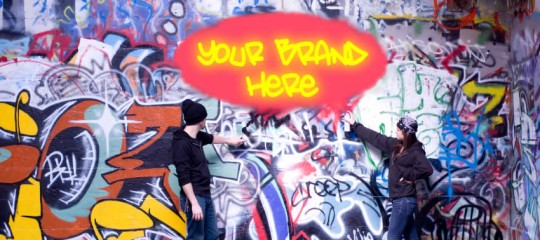Branding: Avoiding Bad Neighborhoods

Are you placing your brand in a “bad neighborhood?” The other day, I was contacted by a BBC reporter, Daniel Nasaw, working on a story about highway naming. At first I thought he had contacted the wrong person, but it turned out there was logic behind his query. The core question, sparked by a move by Virginia to allow corporate sponsorship of highways and bridges, was whether a brand should associate itself with a potentially unpleasant experience. Do motorists, frustrated and angry as the creep along in a traffic jam, think positively of the brand that sponsored that stretch of road? Or does the brand become associated with anger and frustration?
The article quotes branding expert (and occasional Neuromarketing guest author) Denise Lee Yohn:
“You’re stuck on a highway, you’re sitting, and all you can do is look at the sign that says ‘Tostitos Bridge’ or ‘The Coca-Cola overpass’… I see this as a move that companies would consider just as something different – a new touch point, a new vehicle from which to broadcast their name. Repeated exposure is so important for brands these days because there is so much clutter.”
There’s little doubt that repetition and familiarity are critical for brands. It has been demonstrated that ease of recall is often a proxy for liking, and (as shown by brain scans) we prefer familiar brands to unfamiliar ones (even when both are invented and we have no personal experience with them). So, repeated (and sometimes lengthy) exposures to hordes of motorists during a daily commute could be a huge branding tool.
Conditioning and Association
Persuasion expert Robert Cialdini discusses the term “association” in the related context of conditioning. Cialdini cites both academic research and real-world practice to show that people are influenced by extraneous factors when they form impressions of brands and people. People dislike the weatherman when their party is rained out, even though reporting the weather doesn’t cause rain to fall. Ideas expressed over lunch are viewed more positively than those unaccompanied by food. Brands use celebrities and attractive models, knowing that some of that luster will transfer to their products.

The potential branding risk I see is that the wrong kind of association could be formed. If a commuter is late for dinner because he’s stuck in a traffic jam on the Pepsi freeway, might not some of that negative emotion attach itself to the Pepsi logo he’s staring at while inching forward?
Bad Neighborhoods
For years, in the arcane world of search engine optimization, the term “bad neighborhoods” has been used to refer to groups of dodgy interlinked sites that use optimization techniques frowned upon by Google and other search engines. Legitimate sites have always been told to “avoid bad neighborhoods,” i.e., to not associate with these questionable sites by linking to them, lest they be viewed as part of the sketchy network themselves.
Bad neighborhoods can apply to branding, too. Brands should seek to associate themselves with the positive and pleasant, and avoid situations where their potential customers will be experiencing a negative emotion. The association principle dictates that even if the negative emotion is unrelated to the brand, it can still transfer. Nobody would rationally blame Pepsi if some moron crashed his SUV during rush hour, blocking two lanes and causing a massive backup. At the emotional level, though, creeping past Pepsi signage with growing frustration could be a brand negative.
What do you think? Do the rewards from branded bridges and highways outweigh the risks? And, at a more fundamental level, does this kind of commercialization trivialize public projects. Should “Kennedy” and “MacArthur” be replaced by “Starbucks” and “Samsung?” Share your thoughts as a comment!
